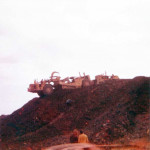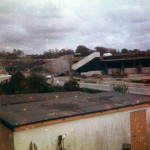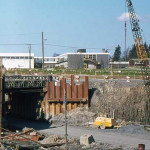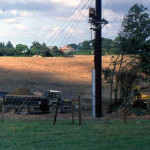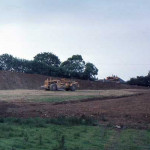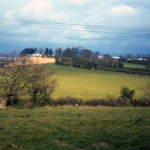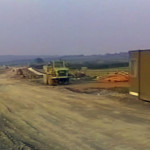With thanks to Rob Smith, Colin Barrett, Steve Dymond, Steve Baker and Mark Davey for the photos.

A30 Trunk Road: Cornish & Devon Post, January 21st, 1956:
Trunk Road Would Cost £450,000. Launceston Disclosure. £170,000 For Section From Scarne to Bulsworthy Lane.
While the £450,000. scheme for a bye-pass of Launceston running from Scarne Cross to Lifton Down, is not thought to be likely for a good many years yet, the possibility of a £170,000. instalment on it provides a section from Scarne Cross to Bulsworthy Lane, may come about in a few years time. The matter is still nebulous, but it has been the subject of discussion at several levels, and the latest comes from a meeting between representatives of the Ministry of Transport, Cornwall County Council, and Launceston Town Council, held last week. A report of this meeting on the subject of traffic congestion in Launceston was presented to this week’s Town Council meeting, where it was stated that the borough representatives had expressed the opinion that the summer congestion could be eased by using Bulsworthy Lane for Westbound traffic during peak periods, or by the construction of the part of the trunk road from Scarne Cross to the point where it meets Bulsworthy Lane.
The County Surveyor [Mr A Ashworth] had stated that the lane, in its present condition, was not suitable for use as a diversion. The average width was Eleven feet, and the narrowest only Eight feet and Six inches, and there was limited visibility. Both he and Ministry’s Devon Divisional Road Engineer [Mr TE Hutton] had stated that the cost of improving Bulsworthy Lane for the purpose suggested was uneconomic and though it preferable to plan for the construction of the trunk road. This, as stated, would be £450,000, in full, but £170,000 for the section from Scarne to Bulsworthy Lane.
The Divisional Roads Engineer was prepared to proceed to obtain the necessary Order under the Trunk Roads Act [which normally takes up to Two years]. Once this Order was obtained the Council would be in a better position to press for the work to be done. The Divisional Engineer also pointed out that this scheme was not included in the present fur-years programme, it being the Government’s policy to give priority to industrial areas concerned with the export trade.
The Borough representatives replied that its tourist industry in Cornwall that it was the basis of the economic life of a large proportion of the population, and the tourist obtained his first and last impression of the county at Launceston. The present hold-up of traffic entering and leaving Cornwall was, it is claimed, doing harm to the industry, and it caused a loss to the quite considerable commercial traffic.
Page’s Cross Scheme: The Town Council members also enquired of an improvement scheme was to be carried out at Page’s Cross and were advised that there was a scheme in being, but it was not a priority at the present, owing to more urgent road improvement work.
The Div. Eng. and the County Surveyor were asked to express their opinion of a suggestion that there should be a ‘no overtaking’ provision on the A30 from Kensey to Pennygillam, operated during peak traffic conditions. Their view was that this might bring about considerable improvement in the flow of traffic.
The following is an extract from a magazine kindly transcribed for the website by Steve Dymond, his website is here.
Having extricated oneself from the crawl around Exeter, which of course was shared with the A38 traffic, the road became even narrower and more undulating. Here, traffic speeds were often down to around 20 mph at times. Overtaking was next to impossible and very risky. It snaked its way through villages like Tedburn St Mary, Cheriton Bishop, Whiddon Down, Sticklepath and, Lifton.
Crossing over the River Tamar at Polson Bridge and entering Cornwall, we were on the last leg of our own journey, a terraced house on Kensey Hill, Launceston. This was halfway up the hill leading to the hairpin bend known locally as Prouts Corner, after the adjacent garage. This was where I spent many hours in the 60’s and early 70’s, watching the heavy traffic negotiating the tight bend. I soon came to recognise many of the regular haulage companies using the A30 at that time. There was ECC Ltd, English China Clays and their subsidiary, the Heavy Transport Co. of St. Austell, along with Western Express Haulage. A firm local to the Launceston area, Glover and Uglow, operated green liveried tippers, usually Bedford’s, on china clay and other traffic. Richards and Osborne of Fraddon, were a regular sight throughout the A30 and A303, again sporting a green livery.
There were the regular coach services and excursions. Apart from the famous Royal Blue, on the London to Penzance run, there were such companies as Grey Cars, Grey Green, Greenslade’s, Black and White and Wallace Arnold.
The hairpin bend at Launceston though, was the trickiest part of the route. In summer, all the conflicting movements created huge westbound jams, going back through Lifton and beyond towards Okehampton, itself another bottleneck. Holidaymakers drove through Friday night from the South East, the Midlands and the North on the 2 day trek to Cornwall. By Saturday morning, Prouts Corner was gridlocked.
After that, the next bottleneck, was Bodmin, then Fraddon and Indian Queens.












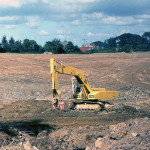

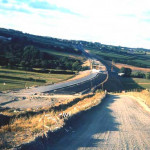
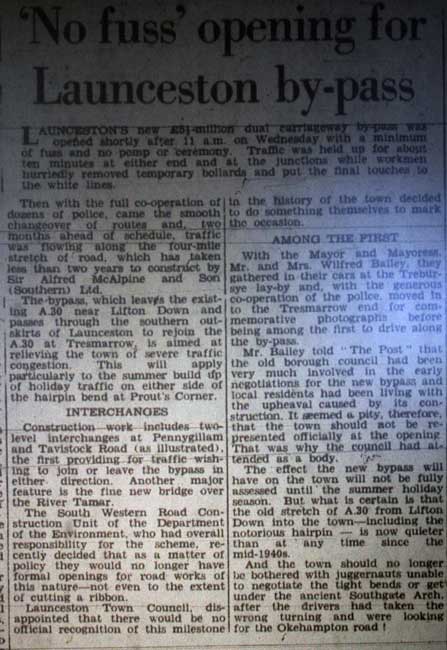

When the A30 dual-carriageway was built between Lifton Down and Launceston in 1976, an agreement was made between the highways departments of Devon and Cornwall that each river bridge on the county boundary should be owned by one authority only. Every other bridge now belongs to Cornwall for maintenance purposes; Polson Bridge to Devon, Dunheved Bridge to Cornwall, Greystone Bridge to Devon, etc., making it much easier for either authority to carry out necessary works individually. In 1988 the full work on dualing the whole A30 from Whidden Down to Temple was started with the completed works opening in 1992.
Above looking down towards Two Bridges in 1989 with the new A30 being cut through part of Strayer Park, Trevell.
Visits: 456










